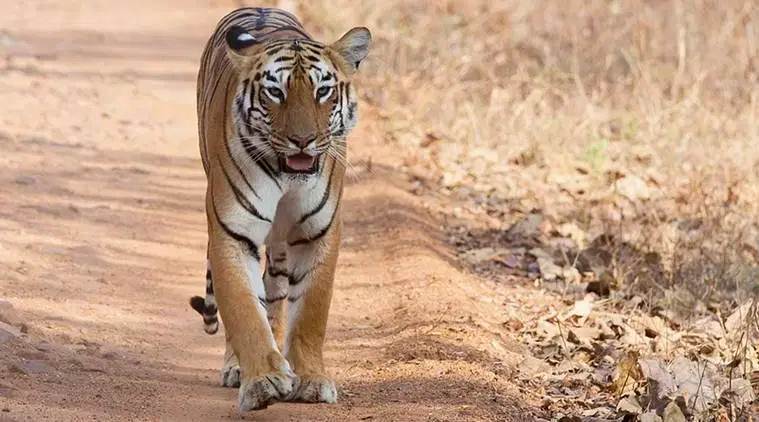Three months after The Indian Express exposed major anomalies in the government’s tiger photo database, the National Tiger Conservation Authority, a statutory body under the Environment Ministry, has proposed to overhaul its population monitoring setup, admitting there is no scope for “reconciliation of data”, “peer review or inputs from other professionals” in the present scheme of things.
On July 29, the government had announced an estimated 2,987 tigers based on 2,462 individual tigers photographed across India.

In September, The Indian Express investigated each of the 1,635 unique tiger photos claimed in the previous tiger census report released in 2015. And found that, by well-established norms of wildlife population estimation, 221 of these “tiger photos” should not have been counted. The anomalies include duplicates, underage, faulty counting by flanks, and unidentifiable images. This worked out to 16% over-reporting — in other words, there is one paper tiger for every seven tigers in the data.
 The Indian Express report on September 20, 2019
The Indian Express report on September 20, 2019
The government has not released the full 2019 report since.
In a note dated December 16 to Dehradun-based Wildlife Institute of India (WII), also under the Environment Ministry, the NTCA conveyed its proposal to revamp its Tiger Cell to “bring more accountability, transparency and scientific robustness” and “fill the gaps in scientific monitoring and research observed since 2006, when All India Tiger Estimation started in country”.
While the WII has been conducting the quadrennial all-India tiger surveys for the NTCA since 2006, the Tiger Cell was set up through an MoU between the two in August 2016.
The Tiger Cell, the NTCA note observed, has been functioning as a single entity in Dehradun under two senior WII faculties assisted by a set of contractual staff which “centralised the overall structure and has been a challenge to source and disseminate information.”
Story continues below this ad
Pointing out that the “Tiger Cell is currently seen as laboratory-based population estimation and monitoring unit with database management with lack of inputs from field,” the NTCA note underlined that the cell “needs to serve as real technical arm of NTCA and this can only be achieved if it is integrated through Regional Offices.”
Accordingly, the NTCA has outlined a new structure with Tiger Cells in each of the NTCA’s three regional offices – at Guwahati, Bangalore and Nagpur – and asked the WII to submit technical and financial proposals to put in place a “multi-tier system” enabling structural decentralisation and efficiency.
Among the gaps identified by the NTCA in present setup are: No mechanism for peer review or inputs from other professionals; One-way data flow and production of report with no place for reconciliation of data with field functionaries; no capacity building in territorial forest areas outside tiger reserves.
Outlining the functions of the revamped Tiger Cell, the NTCA sought to make population monitoring an annual feature. The other focus areas include: Understanding tiger movement; allocating resources for post-village relocation strategies for habitat restoration; bridging knowledge gaps between reserves and develop landscape-level conservation plans.
Story continues below this ad
Observing that a number of WII faculty members have been working in different tiger landscapes with considerable field experience and expertise, the NTCA note said that some of them could be appointed as nodal scientists for its regional offices, while at the national level the Tiger Cell “shall be headed by an IG/DIG level officer with a central Nodal Scientist nominated by Director, WII for technical collaboration”.
Extending the tenure of the existing MoU by two months till February 2020, the NTCA note said that the Tiger Cell “in future is to be managed in the project mode of duration of 3 years like other NTCA funded research projects and MoU for the same needs to be mutually agreed and then signed between” the NTCA and the WII.
“We have sent a note on the proposed changes. It will be finalised after discussing with all stakeholders,” said Anup Kumar Nayak, member-secretary, NTCA. Contacted by The Indian Express, acting director of WII Dr Pradip Singh declined comment. “The new director will join in a couple of days,” he said.

 On July 29, the government had announced an estimated 2,987 tigers based on 2,462 individual tigers photographed across India.
On July 29, the government had announced an estimated 2,987 tigers based on 2,462 individual tigers photographed across India.
 The Indian Express report on September 20, 2019
The Indian Express report on September 20, 2019





